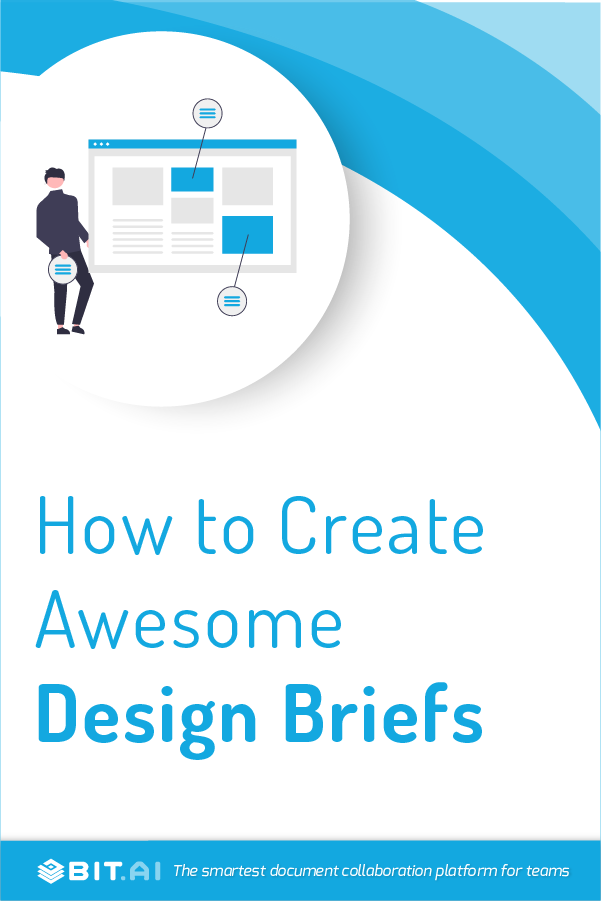Imagine this: You want to send gorgeous pamphlets and brochures to your customers. You find a designer, give him a verbal overview of your requirements, and you ask him to create them for you within a week.
The designer creates your pamphlets and brochures, but they aren’t anything like what you had in mind. The size isn’t right, the design isn’t suitable for your target audience and it doesn’t reflect your brand personality at all.
We just have three words for what happens next: chaos, chaos, and chaos.
Well, it isn’t the designer’s fault, because you neither gave him any specifications nor did you mutually agree on any design or color scheme. You just told him that you want him to design a pamphlet and brochure for XYZ.
Shockingly, things like this happen quite a lot. The clients don’t communicate their requirements appropriately, designers aren’t able to grasp what the client exactly wants, and everything turns into shambles.
So, is there a way out of this horrifying scenario? Of course, there is! It’s called a design brief and we’re going to tell you all about it in this blog. Ready? Let’s go.
What is a Design Brief? (Definition)
A design brief is defined as a piece of document that specifies all the core details of the design project. It’s the foundation of the project and something that keeps both the designer and the client in the loop.
A design brief is created by the client, and it states their needs and requirements. Simply put, it is created to give the design agency/designer a “brief” about the design work that needs to be done.

Once the client creates the design brief, it is sent to the designer, who then adds all his ideas to it. The design brief is finalized after both parties agree on the deliverables and everything else that’s written.
From the client’s POV, a design brief ensures that they will get everything they want in the design. From the designer’s POV, it helps them stay on track and meet the client’s expectations.
Just like every other document, if you want your design brief to be A-OKAY, there are some elements that you just have to include in it. Let’s learn what these elements are!
How to Create a Design Brief in Simple Steps?
Step 1. Mention the Goals & Objectives of the Design
First things first, mention why the design is being created. Talk about its purpose and what it aims to achieve. After all, no designer wants to waste their creativity on something that the client won’t even use well.
So, if you want the design agency or designer to create a new website for you, list down whether you need the website so that people can buy your products directly from it, or you just want it to promote your company.
When the designer knows exactly why they’re doing what they’re doing, they would be able to do it in a MUCH more efficient way. That’s human nature 101.
Read more: Client Brief: What is it and How to Write it? (Steps Included)
Step 2. Include the Budget and Timeline
It’s very obvious, but we had to put it out there. Clearly mention the mutually agreed amount that the client would pay the designer. Better yet, mention the amount of each and every deliverable separately.

Once that’s done, specify when you want the designs. Always remember, the timeline needs to be realistic and mutually agreed upon. That’ll help you avoid all future conflicts.
Also, don’t forget to leave some room for changes. Life can throw a curveball anytime and things might affect your budget and timeline!
Step 3. Include Target Audience Details
If your target audience is teenagers, a flashy design would work. If your target audience is people above 60, you’d need a subtle and simple design that gets the message across quickly.
Similarly, if your target audience is people who’re in a 9-5 job, you’d need a design that catches their attention within a few seconds, because they’re busy the entire day.
In a nutshell, if you want the design to be perfect and right on point, you need to clearly define your target audience in the design brief.
Step 4. Mention Scope of the Project
In this part, the designer has to lay out exactly what he and his team are going to work on – whether it is a new webpage, a new logo, or an entire ad campaign.
Make sure that you mention all the deliverables with complete details. For instance, if you’ll be working on just the web designs and not the print ones, write it down.
OR, if you’re creating print files, mention down what the size and format are going to be. This’ll ensure that everyone is on the same page and no one wastes their time and effort.
Step 5. Explain What Would the Overall Design Look Like
The designer wants to know if they understand exactly what the client wants. The clients want to know if they’ve hired the right designer for the job. 🙂
So, in the design brief, add a blueprint of what the final design would look like so that everyone knows what they’re getting themselves into, and there are no conflicts in the future.

We know that it’s not possible to show exactly what the design is going to look like at the end. But you can provide a basic layout and a structure. Something is always better than nothing.
Tips & Tricks for Creating a Perfect Design Brief
1. Keep it Easy on the Eyes
Designing something already takes up a lot of time, so no one should have to spend hours trying to understand what’s written in the design brief. In short, your design brief needs to be well-formatted, and easy on the eyes.
Even though formatting a document sounds like a lot of hassle, it isn’t, especially when you’ve got Bit.ai with you! This amazing documentation platform has over 90+ fully responsive and stunning document templates.
Pick a template that is closest to what you want, put your data in it, and leave the formatting to Bit! 🙂
2. Make it Interactive & Comprehensive
A bad design brief can cause confusion and critical delays, and you need to avoid that at all costs.
So, try to untangle all the complex information in the brief using rich media like images, charts, graphs, spreadsheets, and more. That’ll make it super easy to visualize exactly what the client needs.
Even though this sounds like a time-consuming task, it isn’t, because Bit.ai has got your back! This nifty platform can handle all the rich media content you throw at it.
Just copy the shareable link, paste it into your Bit doc and it’ll appear on your document beautifully!
3. Work on the Document Together Before Finalizing it
A design brief isn’t something that is created by just one team or one company. Both the client and the design agency have to collaborate on it before it’s finalized.
But, we wish ‘collaboration’ was as easy as it sounds. You’ve to spend hours on calls, attend meetings and send thousands of emails back and forth. Ugh, that is a daunting task!

So, what’s the solution? Bit.ai! On this platform, multiple people can collaborate on documents in real-time. You can even give ‘guest access’ to someone. Here’s what it is:
The ‘guests’ can get two types of access to documents: read-only and comment-only. With the former, they can only read the content you have shared with them and the latter lets them give their suggestions and feedback.
Read more: How to Write a Client Project Reports that ‘Wow’ them? (Template Included)
4. Use Tables to Provide Clarity to the Budget
We think we’ve made it very clear how important the budget section of your design brief is. Yes, you can simply type all the complex figures, but there’s a better way to show them – tables.
This way, everyone who reads the design brief would be able to grasp the complex figures in a quick glance. Mind you, we’re not talking about those dull and boring tables.
We are talking about the ones that Bit lets you create! On Bit, you can create wonderfully designed tables with the click of a button. The colors of the table automatically change based on the colors of your document’s theme! 😎
Wrapping Up
Just as you can’t build a great building without a solid foundation, you can’t get started on a design project without a design brief. Trust us, it’ll save you from a lot of hassle in the future.
Honestly, you don’t even need to stress about creating a design brief – or any other document – when you’ve got Bit.ai with you. It takes care of almost everything for you and all you need to do is add your content.
So, sign up on Bit.ai today and experience its greatness! If you’ve any questions or suggestions, hit us up on Twitter at @bit_docs and we’d get back to you. Cheers!
Further reads:
Creative Brief: What is it and How to Write it? (Free Template)
User Persona: What is it & How to Create it?
Design Proposal: What is it & How to Create it?
Software Design Document: What is it & How to Create it! (Template Included)
How to Create Quotations That Your Clients Can’t Reject?
Basic elements of design for creating awesome visuals
Design Documents: Definition, Importance, Key Elements!
What is a Website Proposal & How to Write a Good One?



